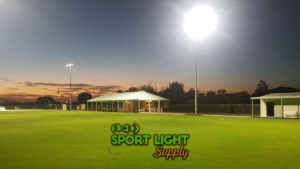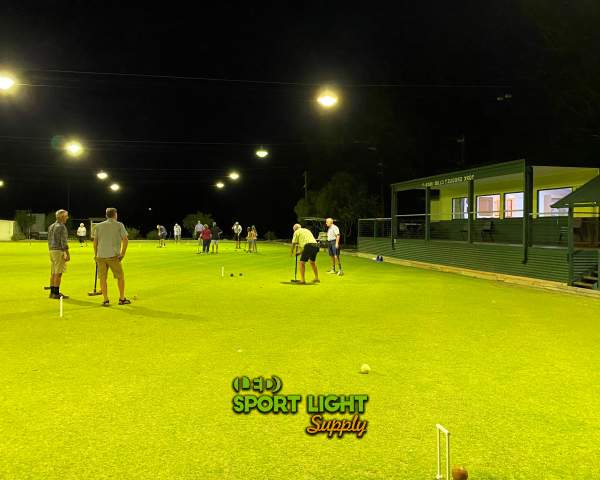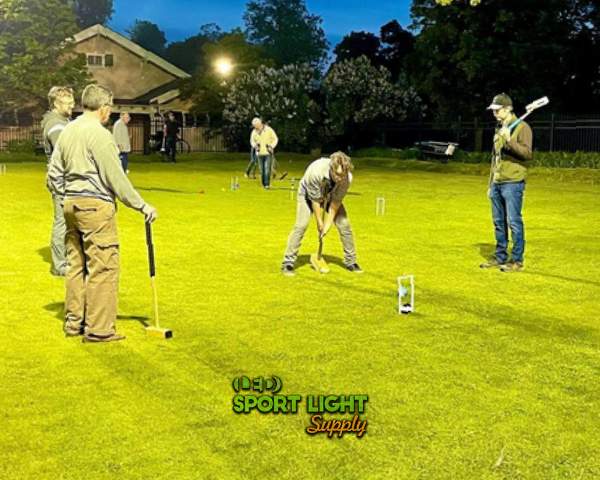
Croquet is a game that requires precision, focus, and a clear view of the playing area to ensure fair play and enjoyment. Proper lighting plays a significant role in facilitating these elements, particularly when matches extend into the evening or take place indoors. Ensuring a croquet court is adequately lit involves more than simply installing lights; it demands careful consideration of factors such as brightness, uniformity, glare reduction, and energy efficiency. Traditional lighting methods often fall short of meeting these requirements, but advancements in LED technology offer a solution that combines superior lighting performance with sustainability.
Table of Contents
Toggle The recommended illumination level for croquet courts is approximately 200 lux on average. This level ensures that players can clearly see the balls, hoops, and mallets, as well as the boundaries of the court. Sufficient lighting helps players make precise shots, reduces eye strain, and enhances overall visibility, contributing to a more enjoyable game. Traditional lighting systems, such as incandescent or halogen fixtures, often struggle to maintain consistent brightness across the entire court, which can lead to uneven lighting conditions and shadows.
The recommended illumination level for croquet courts is approximately 200 lux on average. This level ensures that players can clearly see the balls, hoops, and mallets, as well as the boundaries of the court. Sufficient lighting helps players make precise shots, reduces eye strain, and enhances overall visibility, contributing to a more enjoyable game. Traditional lighting systems, such as incandescent or halogen fixtures, often struggle to maintain consistent brightness across the entire court, which can lead to uneven lighting conditions and shadows.
LED lighting offers a superior approach to achieving the required lux levels for croquet courts. LEDs have a higher luminous efficacy, meaning they produce more light per watt compared to older lighting technologies. This efficiency ensures that the entire playing area is uniformly illuminated, even in larger or outdoor courts where traditional lights might not be as effective. By using LEDs, facilities can provide consistent lighting levels that meet or exceed industry standards, thereby enhancing the playing environment.
One of the main advantages of LED lights is their high efficiency. LEDs convert a significant portion of electrical energy into visible light, unlike incandescent bulbs, which waste much of that energy as heat. This efficiency translates to lower electricity consumption, reducing the overall cost of lighting operations. In addition, LEDs have a much longer lifespan, often lasting tens of thousands of hours before needing replacement. This longevity reduces the need for frequent maintenance, making LEDs a cost-effective option for croquet facilities.
Beyond their efficiency, LED lights also contribute to reduced environmental impact. By consuming less electricity, they lower the carbon footprint associated with powering lighting systems. For facilities that prioritize sustainable practices, switching to LED lighting is a step toward aligning with environmental goals. This not only reduces energy bills but also supports a greener and more sustainable approach to facility management.
 Uniformity in lighting is a crucial factor in the design of croquet court illumination. Uneven lighting can create shadows that disrupt a player’s view, affecting the accuracy of shots and overall gameplay. The presence of dark spots or overly bright areas can lead to inconsistent visibility, which may impact the performance of players, especially in competitive settings.
Uniformity in lighting is a crucial factor in the design of croquet court illumination. Uneven lighting can create shadows that disrupt a player’s view, affecting the accuracy of shots and overall gameplay. The presence of dark spots or overly bright areas can lead to inconsistent visibility, which may impact the performance of players, especially in competitive settings.
LED fixtures are particularly well-suited for achieving uniform light distribution due to their design flexibility. Unlike traditional lights, which often cast a more scattered light pattern, LEDs can be arranged and angled precisely to illuminate specific areas of the court evenly. By adjusting the beam angles and using diffusers, LED systems can create a balanced lighting effect that covers the entire playing surface without harsh shadows or overly bright spots.
Glare is a common issue with many types of lighting, particularly when fixtures are placed at angles that directly shine into players’ eyes. This can cause discomfort and hinder players’ ability to see the game clearly, especially when looking toward the lights during a shot. Traditional lighting fixtures, such as halogen or fluorescent lights, often produce significant glare due to their inability to control the direction and intensity of the light beam.
LED lights address the issue of glare more effectively than traditional lighting systems. By incorporating specialized optics and diffusers, LED fixtures can direct light precisely where it is needed without spilling into areas where it may cause visual discomfort. This level of control is achieved through advanced designs that focus the light beam, reducing scattered light and preventing glare. For croquet courts, where clarity of vision is necessary, LEDs offer a significant improvement in creating a comfortable visual environment.
One of the primary reasons facilities are shifting to LED lighting is the substantial reduction in energy consumption. LED lights require less electricity to produce the same level of brightness as older lighting technologies. This results in lower utility costs, which can be particularly beneficial for facilities that operate their lighting systems for extended periods. The reduced power usage also means that croquet facilities can lower their operational expenses without compromising the quality of illumination on the courts.
In addition to reducing electricity bills, LED lights contribute to sustainability by decreasing greenhouse gas emissions associated with power generation. For organizations that emphasize environmentally responsible practices, adopting LED lighting is a step toward meeting sustainability targets. LEDs do not contain hazardous substances like mercury, which is commonly found in older fluorescent lamps, making them a safer option for both indoor and outdoor installations.
Installing an LED lighting system on a croquet court involves careful planning to achieve the desired brightness and uniformity. The layout of fixtures, the height of poles, and the orientation of the lights all play a role in ensuring optimal performance. LED lights can be mounted in various configurations, depending on whether the court is indoors or outdoors, and adjustments can be made to suit specific requirements. Proper planning ensures that the lighting system delivers consistent results, even under varying weather conditions.
One of the often-overlooked benefits of LED lighting is the reduced need for maintenance. Unlike traditional lighting fixtures that require regular bulb replacements due to shorter lifespans, LEDs can last significantly longer before showing signs of degradation. This not only reduces the labor and costs associated with maintenance but also ensures that courts are consistently available for use without interruptions due to lighting issues. In outdoor environments where exposure to the elements is a concern, LEDs offer the durability needed to withstand harsh weather while maintaining reliable performance.
Whether a croquet court is located indoors or outdoors, LED lighting systems can be adapted to suit the specific environment. For indoor courts, LEDs provide a controlled lighting environment that can be adjusted to the precise lux levels needed without the interference of natural light. Outdoor courts, on the other hand, benefit from the robustness of LED fixtures that are designed to operate efficiently in different weather conditions, ensuring consistent lighting throughout the year.
By offering flexibility in design and installation, LED lighting enhances the overall experience for players, regardless of the court setting. The ability to adjust light intensity and distribution means that facilities can optimize their lighting systems based on specific needs, whether it’s for casual play, training sessions, or formal tournaments. This adaptability ensures that players always have a clear view of the playing field, which can improve performance and enjoyment of the game.
Upgrading to LED lighting for croquet courts is a move that benefits both players and facility managers. The superior efficiency, long lifespan, and enhanced light control offered by LEDs make them an ideal choice for ensuring optimal playing conditions. By providing uniform illumination, reducing glare, and lowering energy consumption, LED technology supports the dual goals of performance and sustainability. As croquet facilities look to modernize their operations, investing in LED lighting systems offers a pathway to improved gameplay and long-term savings.
Drop us a line to receive a free lighting design